Appreciation: John Mayall, dead at 90, was pivotal in careers of Eric Clapton, Fleetwood Mac and more
Published in Entertainment News
SAN DIEGO — John Mayall’s death Monday at the age of 90 from undisclosed causes came less than three months before he was to be inducted into the Rock & Roll Hall of Fame. But for scores of music fans, the legendary godfather of British blues has been a hall of famer since the 1960s when his storied band, the Bluesbreakers, was a pivotal launching pad in the careers of at least seven musicians who are now themselves Rock Hall inductees.
They include Eric Clapton and Jack Bruce, who co-founded the pioneering power trio Cream after leaving Mayall’s band, and Fleetwood Mac co-founders Peter Green, Mick Fleetwood Mac and John McVie, whose tenure in The Bluesbreakers laid the foundation for Fleetwood Mac.
Other Bluesbreakers’ alums who rose to fame after playing in Mayall’s band include Rolling Stones’ guitarist Mick Taylor and drummer Aynsley Dunbar, who went on to play in the band of Frank Zappa and co-found the group Journey. Both Taylor and Dunbar are also Rock Hall inductees.
“When you get in John’s band, you’ve pretty much made it to the pinnacle. I mean: Where do you go from there?” former Bluesbreakers’ guitarist Walter Trout said in a 2021 San Diego Union-Tribune interview.
Yet, while Mayall was understandably proud of his unerring ability to discover and nurture talented young musicians who went on to have standout careers of their own, he tended to downplay his skills as a talent scout and mentor.
“It’s just great being able to earn a living doing what I love,” Mayall said in a 2005 Union-Tribune interview. ‘I’m not going away. There’s this segment that considers me some legendary figure and it’s a pleasure to continue playing because of those people.”
Mayall was born in Macclesfield, England, near Manchester, on Nov. 29, 1933. A trained graphic designer and artist, he was 30 when devoted himself to music after a stint serving in the military in Korea. He was soon sharing his love of such American blues greats as Robert Johnson, Sonny Boy Williamson, Otis Rush, J.B. Lenoir with other musicians in England, where he built a loyal following.
The lineups of Mayall’s bands changed constantly and audiences eagerly welcomed the chance to hear the latest hot young musicians he had discovered. After multiple concert tours of the United States, Mayall became a permanent Southern California resident in 1969.
A distinctive, reedy-voiced singer and harmonica player, Mayall also played guitar and keyboards. While he tirelessly championed songs by American blues pioneers, he was an accomplished songwriter whose lyrics had a distinctly personal stamp.
“If you’re gonna sing something, you should sing something personal,” Mayall said in his 2005 Union-Tribune interview. “That’s what the main feature of the blues is: you tell your story. I’ve never been a fan of singing about things I have no experience of.”
Mayall performed numerous times in San Diego over the decades, most often at the Belly Up. His final area performance came in 2021 at the Poway Center for the Performing Arts. He was 88 and it was the final tour of his career.
Mayall was in declining health at the time and not available for interviews. Our in-depth 2021 feature story on him, which includes quotes from a number of his musical collaborators and several San Diego musicians, appears in full below.
John Mayall, famed ‘Godfather of English blues,’ on final concert tour, at 88, after bout with COVID-19
By George Varga,
The San Diego Union-Tribune
Dec. 5, 2021
John Mayall, the famed “Godfather of British blues” and a pivotal musical catalyst for at least seven Rock & Roll Hall of Fame inductees, was not yet 34 when he released his fifth album, “A Hard Road,” in 1967.
Now, 54 years later, the end of that road appears to be looming for the man whose pioneering band, The Bluesbreakers, served as the launching pad for a bevy of talented young musicians bound for stardom. Some key examples include the Rolling Stones’ Mick Taylor, Cream’s Eric Clapton and Jack Bruce, and Fleetwood Mac’s Peter Green, Mick Fleetwood and John McVie.
“When you get in John’s band, you’ve pretty much made it to the pinnacle. I mean: Where do you go from there?” said guitarist Walter Trout, 70, who played with Mayall for much of the 1980s.
Mayall’s current concert trek includes a Saturday show at Poway Center for the Performing Arts that will also feature Trout and his band. It is one of six dates Mayall is performing between Friday and Dec. 17, after which he has no other shows currently scheduled.
His next (and possibly last) album, “The Sun is Shining Down,” will be released Jan. 28 — nearly one year to the day after this year’s release of his 35-CD career retrospective box set, “John Mayall: The First Generation.”
His pending half dozen concerts could be a bittersweet combination of celebration and reflection for this tireless champion of American blues. Ditto for the three members of his current band and his long-devoted fans.
Mayall announced this fall that he is bowing out from touring, although the Woodland Hills-based singer, harmonica player, guitarist and keyboardist hopes to do some periodic one-off gigs in and near Southern California. He moved from his native England to Los Angeles in 1969.
“I have decided, due to the risks of the pandemic and my advancing age, that it is time for me to hang up my road shoes,” Mayall, who turned 88 on Monday, said in a Sept. 22 statement.
“As a result, I will be radically reducing my touring schedule and will be limiting my performances to local shows near my home in California and the occasional concert further afield. My epic road dog days, however, have come to an end.”
Those days have been epic indeed. The number of concerts Mayall has performed number in the thousands. His career began nearly 60 years ago in England, where he soon earned acclaim as a first-rate band leader, devoted performer and unusually astute judge of young talent.
His live performances continued almost unabated until May 2019, when — following an extensive European tour — a bad case of pneumonia led him to cancel about six weeks of spring concerts in the U.S.
Mayall returned to the road that same summer, followed by another tour of Europe in the fall of 2019. He performed four Southern California dates in early 2020, concluding with a gig at Solana Beach’s Belly Up. The venue has hosted numerous concerts by Mayall over the past four decades.
His Belly Up show was followed a few weeks later by an ill-fated trip to London. Mayall performed there on Feb. 25, 2020, at the “Mick Fleetwood & Friends Celebrate the Music of Peter Green and the Early Years of Fleetwood Mac” all-star concert.
“John got COVID at the end of that trip, and he had a bad case of it,” Jay Davenport, the drummer in Mayall’s band since 2008, told the San Diego Union-Tribune.
“And, then, we didn’t play a note of music together for a year-and-a-half because of the pandemic. I think there were some lingering effects (from COVID) and, basically, some health issues. It just felt very dangerous to do a whole lot of traveling. John seemed more fragile.”
‘Still blows my mind’
Mayall happily returned to the road in August, performing anywhere from 90 minutes to 2½ hours per concert. His distinctively reedy singing voice and instrumental prowess were seemingly unaffected by his bout with COVID and he earned glowing reviews for his Aug. 22 show at Chicago’s City Winery.
But at least one write-up of his gig in the Windy City noted that Mayall appeared periodically confused by the sequence of songs in his set list. Apart from that, nothing was amiss.
“John would announce the same song a few times and lose his place in the set list,” Davenport, 61, said. “On the other hand … once he had the right song, he played his ass off!
“We did four nights in October in Park City, Utah, and he was unbelievable. We did a different set each night, and — during one of them — he spontaneously wrote two new songs on stage, real songs, right on the spot, that we performed then and there…
“He can still go out and play piano and harmonica, in unison, and those are two very different musical and mechanical disciplines. Playing harmonica and piano at the same time isn’t like walking and chewing gum at the same time. It’s more like walking and building a gum factory at the same time! It still blows my mind he is able to do that.”
Mayall began blowing minds in his native England more than half a century ago. He became a full-time musician in 1963 after serving three years in the English army in Korea, during which time he bought his first guitar while on vacation in Japan.
His love of vibrant American music began when he was a young art student and heard records by American boogie-woogie piano giants Meade Lux Lewis, Pete Johnson and Albert Ammons. After discovering Lead Belly, Blind Lemon Jefferson and Brownie McGhee, his destiny was set.
Mayall was delighted to share songs by the American blues masters he revered with English club and concert audiences, for whom he served as a vital musical gateway. He quickly began writing his own songs as well. Some of his best include “The Laws Must Change,” “Country Road” and “Room to Move,” which became an FM radio staple on American stations in the early 1970s.
“If you’re gonna sing something, you should sing something personal,” Mayall said in a 2005 Union-Tribune interview. “That’s what the main feature of the blues is — you tell your story. I’ve never been a fan of singing about things I have no experience of.”
Released in 1969 the chugging, harmonica-driven “Room to Move” remains the most popular song by Mayall, an enduring artist who has never had a hit album or single in the U.S.
“His rhythmic harmonica playing on songs like ‘Room to Move’ was revelatory,” said veteran San Diego musician Andy Robinson.
“With its virtuoso harmonica hook and extended ‘mouth percussion’ solo, ‘Room to Move’ had a feel like nothing else,” agreed Encinitas singer-songwriter JT Moring. “That song is still a benchmark for the kind of energy I’d like to bring to live performances.”
The impact of Mayall’s best-known song extends to Jordan Peimer. He is the executive director of the University of California San Diego’s ArtPower, which features established and rising blues and jazz artists in its annual performance seasons.
“As a young music listener ‘Room to Move’ opened my eyes and ears to something very basic in music that was always there, but which I’d never been able to name before,” Peimer recalled.
“As I grew into a curator, I kept the astonishment that Mayall’s ‘The Turning Point’ album — and, eventually, his live shows — left with me. … In a lot of ways, it helped motivate me to create ArtPower’s ‘The American Routes’ series.”
Eric Clapton, Peter Green, Mick Taylor
From 1965 on, the lineups of Mayall’s Bluesbreakers changed on a regular basis as the young musicians he nurtured left to form their own bands.
Much like a blues-rocking version of Art Blakey’s Jazz Messengers, The Bluesbreakers served as a vital incubator for dozens of musicians. The first major turning point came with Mayall’s “Bluesbreakers with Eric Clapton” album, which was released in 1966 and is informally known as “The Beano Album.”
Under either name, it introduced a generation of young Britons and Americans to Clapton’s prodigious guitar skills. It also introduced them to some of the classic American blues songs Mayall treasured, including Robert Johnson’s “Ramblin’ On My Mind,” Otis Rush’s “All Your Love” and Freddie King’s “Hideaway.”
Clapton soon left to form Cream with drummer Ginger Baker and former Bluesbreakers bassist Jack Bruce. Mayall replaced Clapton with Peter Green, who went on to launch Fleetwood Mac. Green was in turn replaced by the teenaged Mick Taylor, who was hired away by the Rolling Stones in 1969.
“For me, discovering The Bluesbreakers’ 1967 album, ‘Crusade,’ was a godsend,” said Billy Thompson, a leading San Diego guitarist and singer now based in Virginia.
“Mick Taylor played some great and influential guitar on that album. … Mayall opened doors for me. I learned who many of the great bluesmen were from Mayall and Clapton.”
But it wasn’t just budding guitar greats who found their footing under Mayall’s mentorship.
At least four drummers — Hughie Flint, Aynsley Dunbar, Jon Heisman and Keef Hartley — launched acclaimed bands of their own in England after establishing themselves in The Bluesbreakers. And Dunbar, after moving to California to play in former San Diegan Frank Zappa’s band, became a co-founding member of Journey.
The band Mark-Almond was formed by saxophonist and flutist Johnny Almond and acoustic guitarist Jon Mark soon after they had recorded two standout albums with Mayall, 1969’s “The Turning Point” and 1970’s “Empty Rooms.” Those albums preceded by more than a decade the all-acoustic “Unplugged” era that MTV began to spotlight in the 1980s.
By mid-1970, Mayall was leading his first band of American musicians. His 1972 live album, “Jazz Blues Fusion,” featured an all-star brass section that he expanded for his 1973 live album, “Moving On.”
‘An incredible education’
“It was an incredible education being a Bluesbreaker,” guitarist Trout said, speaking from his home in Huntington Beach. “John and The Bluesbreakers made so many iconic albums when I was in high school in the 1960s, and I studied them all. The first time I got up and played with John in the 1980s, we did ‘Hideaway’ and ‘All Your Love,’ and I played the Clapton solos, note for note, which I can still do now.
“At the end of the night, John said: ‘Walter, if I wanted Eric I would have called Eric. I love your playing and want you to play the songs the way you want to.’ John freed me that night to come into my own as a musician.
“I learned to be a band leader by watching John. I think he’s one of the great band leaders and I’d rank him alongside Count Basie and Duke Ellington; he knows how to put players together who have the right chemistry. And he’s like my surrogate dad. I was heavily into drinking and drugging when I got in John’s band and he nurtured me, stood by me, and helped me get sober.”
Drummer Davenport, 61, performed with such Chicago blues greats as Junior Wells, Pinetop Perkins, Sugar Blue and Melvin Taylor before joining Mayall’s band in 2008. Unlike a majority of Mayall’s audience and band members over the years, Davenport is not White.
“I’m Black and live in Chicago, and when I went to hang out at a music club Muddy Waters or Junior Wells was sitting at the end of the bar,” Davenport said. “So I didn’t need to look too far for the kind of music John exposed people to.
“What John did do was introduce traditional blues to everyone else in this country. I know so many people that heard John play ‘Hideaway’ and then went searching for the original version by Freddie King.
“John was able to re-create that music more authentically and made blues palatable to a lot of people here. … In England, they were really proud that they weren’t hung up on the color of the guys playing the music, they were just focused on the music.”
Davenport credits a combination of skill, tenacity and leadership for sustaining Mayall’s career since the 1960s.
“John is the sweetest man you could ever imagine being your boss,” Davenport said, speaking from his Chicago-area home.
“It’s funny because everyone calls him ‘Boss,’ dating back to the ‘Beano’ album in 1966. So while Bruce Springsteen has the title ‘The Boss,’ John had it first and we still call him Boss. John is a fearless, tireless leader and he has zero ego. He has a steely will to keep doing it as long as he can, so for him to come to this decision (to stop touring) is a big deal for us.”
The last word goes, as it should, to Mayall, whose autobiography. “Blues from Laurel Canyon: My Life as a Bluesman,” was published in 2019.
Mayall’s devotion to music was underscored in his September announcement of his retirement from touring and in the enthusiasm he expressed for “The Sun is Shining Down,” his upcoming new album.
“It has been a privilege to have spent my life doing what I love and having you along for the ride with me through all of it. I may not be traveling to your location, but I do want to continue to share my love of the blues with you,” Mayall said at the time.
“I’m proud of what we came up with (on the album) and excited to share it with you. I look forward to seeing those of you who can attend my local shows, and I will miss all of you who cannot, but as always, keep loving the blues!”
©2024 The San Diego Union-Tribune. Visit sandiegouniontribune.com. Distributed by Tribune Content Agency, LLC.
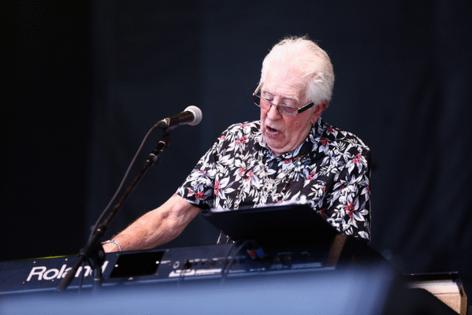

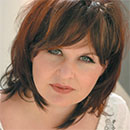
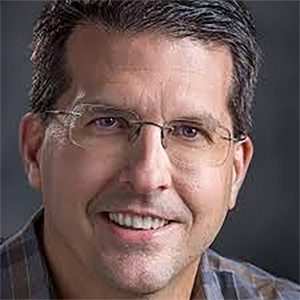
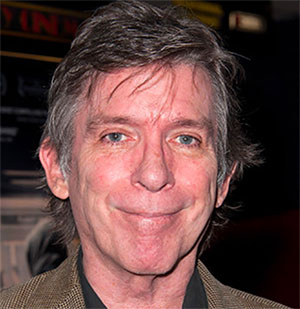

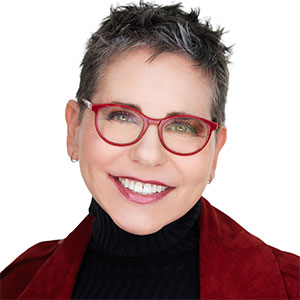






Comments